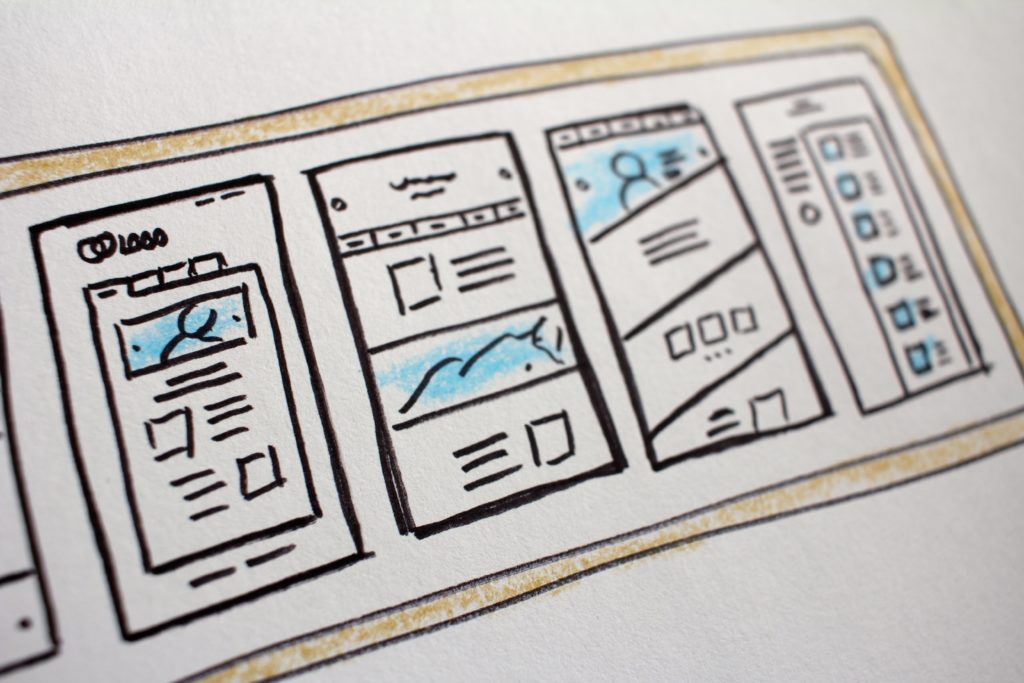A free training program for training CS reps with the skills, tools, and knowledge to delight customers and resolve issues.
The importance of website design to start-ups and how to get to great on a start-up shoe-string.
So websites. Simple, No? Easy. Just find the right template and build it. Whats the fuss? Start-Up folks are go-getters - doers. Anyway, if youre a startup, dont you have more important things to do than fussing over websites? Like sorting your next-gen MVP, compliances, software builds, distribution partners, investment rounds or just running the startup?
Well, yes and no. It seems that, when it comes to prioritising a website, many start-ups, either go way early or way late.
The early birds tend to fire up with a URL and put a website as a stake in the ground - like a signal of intent, or to secure a space in their perceived marketplace. It may also be done for more specific aims like to secure IP in a category, own an idea, theme, name, product or concept space.
The latecomers have usually been consumed with complex MVP challenges, software complexities, shifting market dynamics, IP challenges, investment rounds, false starts, restarts, evolutions, and just generally being overwhelmed by their sprint culture and practical challenges.
Whether youre an early bird, a latecomer, or one of the myriad inbetweeners, defining the importance of a website to your startup should rightly raise some pretty fundamental questions such as the first one alluded to in our headline.

To Web or not to Web
Websites dont seem to fulfil the role they used to, especially for certain age groups and communities. Which is why any and every startup should be really clear about why they are building one, who for and to what end.
So the first question out of the gate: Why are you creating a website?
Is it to engage the audience? Is it a shopping channel? Is it to reassure investors and people seeking information and profile of the start-up? Is it a cultural social happening requiring very particular tribes to show up in droves? Is it an innovation hub where people need to arrive with a set of actions or tasks in mind? Or is it just a shop window that, much like the Whos in Horton Hears a Who shouting We are Here We are Here We are Here, exists to get you seen and heard?
For a start-up, creating a great website requires a highly intense dance through Concept insight, audience, propositional certainty, proof of concept, clarity around benefits and, if youre really punching high on the mission and purposes stakes, a measurable intention in regard to cultural impact and meaning over time.
The Who What Why and Where are critical questions to have answered of yourselves before you spend one coin on web build, bit or otherwise.
There are many simple guides and pieces of advice on how you might approach this exercise and simple templates to help you run the process. You just have to find the right ones for you.
Tip: have a look around and find two or three that have the right tone. Then go through them and find the common threads between them principles, insights and approaches they seem to agree on - and use those common threads as your starting point.
Magic Moolah
Gauging the importance of a website to your startup will be heavily influenced by the nature of the funds you have available to build one.
In the absence of billionaire parents or a lottery win, the other big issue is that in startup land, this is all needs to get done with next to no money [often by a friend of the start-up, or one of its own programmers or coders if the start-up is also an App or a platform with that kind of in-house resource.]
There are many people out there offering tips, guidance and advice to help steer you through the minefield of web costs and avoid unnecessary expenditure in the process - like this one from startups.co.uk on how much does a website cost?
The other issue is that a scarcity of money for the build creates downward pressure on clarity and quality because it usually means that the mechanics, not the message take primacy - what quality fits my wallet?
That can have costly knock-on effects. If you miss-hit on audience understanding or user behaviour, at best, it can be frustrating as well as costly in regard to reversals, rebuilds and loss of market time and opportunity. At worst, it can ring the doom bell on that beautiful startup baby of yours.
The most destructive and negative outcome of underinvesting either the time or the know-how in a startup website becomes all too clear if the start-up fails.
This can leave the founders with no real understanding of whether the fail point was in the functional product or service their startup was offering or simply in their ability to communicate that functional truth in the most compelling and attractive way online.
One other piece of advice: If its your start-up or you are leading it, you must take responsibility for your own expectations.
However attractive and inexpensive a makeshift DIY solution might seem in the short term, abdicating the design and build to someone who kind of knows about digital stuff creates mediocrity. A recurring theme in the startup space is that of websites being created by people who dont really understand the full dynamics at work and subsequently create a substandard web offering. Remember - programmers, coders, content writers, data specialists and digital architects are not industry marketers, brand specialists or e-commerce strategists. So be careful about what you expect from them in regard to the website they might design for you.
A Smarter Way to Build Your Global Team
Meh!
On that Whom point we made earlier, around audience and insight for example - If you are looking to capture the attention and serve the needs of a very specific audience, do your homework. A website is only as important to a start-up as the disproportionate impact it can have on its audience. No insight. No hook. No impact. Result. A website your startup could do without.
For example, if you are aiming at an audience who are under 25, it is critical to get some real insight on their digital behaviours.
Most young people in the advanced economies access the digital world almost exclusively through their smartphones with all of the accompanying digital behaviours, rituals, rites and response expectations that go with it. If you are speaking to them and not leading on Tik Tok, Snapchat, Insta or some such youth-orientated channel or platform, you might be building up to a great big Meh! moment.
If your start-up is more aligned with a stickier, wormhole mindset, you may find aligning with the behaviours and sensibilities of the youtube user far more useful given their longer dwell and usage behaviours, and building for them.
It might also help to do some homework on how your audience behaves in a web environment. In regard to our example, a simple google search revealed that this is exactly the question that the London School of Economics has been trying to answer in their paper on the challenge of engaging youth online. And surprise, surprise: there are differences of opinion between what the producers of the web content and the young people consuming it see as engaging, compelling, interesting and acceptable.
As a cash-strapped, time-poor startup where all of the founders are having to do everything all at once, putting on your Strategic Web Design Insight Director that could pay big dividends.
Foundation Fix
Websites are still critical to the fabric of most sectors and category plays. They create a presence and a foundation for understanding and engagement for many organisations and businesses. That doesnt change in a startup world.
Startups playing in an increasingly DirectToConsumer world need to pay especially close attention to some of the most recent and successful applications of a website in an omnichannel world. Salsify, recognised by Forrester as A visionary and fast-mover in the product Information Management space and commerce states that
Shoppers want the seamless shopping experiences omnichannel commerce provides, prompting both legacy and emerging brands to re-think the direct-to-consumer (DTC) site experience.
They go on to showcase 5 of what they consider to be the best DTC brands operating out there, pointing to the role of customised and personalised products, strong brand storytelling and high-quality product content as the levers to DTC success.
Another important reason for setting up a strong web presence is if your start-up will need to come under the watchful gaze of analysts, researchers, regulators or compliance officers at any point in time. If yes, a website is a table stake - not a nice to have.
Websites are also important in relation to startups that have deeper wells of information and intelligence that inform their integrity and substance. From personnel, including CVs and prior experience, to IP, formulations, methodologies, and practices, this kind of deep information can be critical to a start-up building integrity as a trusted provider.
Certainty Rules
When getting started on your website, its worth considering what the most powerful focus should be. Interestingly, for some, well-reviewed Websites offering a great user experience seem to have replaced the television commercial as a projection of a solid trustworthy entity to engage with. Great reviews create a sharable currency and certainty around what you offer. And certainty is the critical thing here, especially in the easy-come-easy-go shifting sands of the digital world.
To this point, a linked-in post by Dermot McConkey that focuses on the importance of selling certainty suggests:
that four, overriding, conviction factors can create certainty in the mind of a customer. They are time, money, quality and quantity. If you want the[ir] money, you need to clearly establish certainty regarding time, quality and quantity.
So before you even peek at one IA wireframe, fix your certainties. Be super-clear about what youre looking to create an exchange or transaction around.
Set the foundations of certainty and the clarity required to communicate it simply and effortlessly.
For many startups, this is easier said than done, especially in a sprint-obsessed tech-fuelled culture that seems to believe that every person out there is capable of comprehending their MVP proposition. Simplicity is key - to the point that whatever it is that youre certain you are offering in the world, make certain that it is something simple enough to explain to a 5-year-old or someones grandma. If you cant? back to the drawing board.
Once upon a startup
This is a more common challenge than you might think. For example, in some recent creative strategic work for an agency serving the SAMSUNG brand, I needed to find a creative solution to the challenge of how you show off the benefit of SAMSUNGs latest fold phone to entrepreneurs. The solution we devised, called Unfolding Curiosity challenged Founders Forum entrepreneurs [some incredibly smart human beings] to present their ideas to a class of 6, 7, and 8 year-olds to see if the entrepreneurs could deconstruct their story into the simplest terms possible using the phone as a tool. Unsurprisingly, they struggled but also found it one of the most intense, terrifying, yet rewarding exercises they could have put their story through. Thats the kind of storytelling youll need to create the best impact. Thats how important website design is to your startup. It has to be the receptacle of and does justice to your most powerful and compelling story. This brings us to the thorny issue of UX! Even with the best intention and the greatest startup story ever told, with bad UX you can defeat yourself in 3 clicks and lose the customer forever.
UX vs. Ugghhh
Next to the story, the user experience design is the most important aspect of your website.
Your website is a digital proxy for your startup. A bad experience not only frustrates the user but also reflects badly on your broader offering. If the UX is clumsy, glitchy, laggy or just simply downright ugly, those are the attributes that the user will assign to your startup.
Great UX is the holy grail with some even wondering whether UX killed the behemoth that is/was branding. UX is, without question, the killer App inside the best web and App experience to the degree that really bad UX can actually lead to fatalities in very rare circumstances
For most startups, cheap rushed and just not very good UX will never come even close to harming anyone or anything other than the start-ups reputation and commercial ambitions.
Think Big Digital in their recent piece on UX went as far as to say that:
UI/UX design is a sole determiner of your businesss growth and acts as a visual medium that instantly connects the audience to your services and products.
Of course, in a more cynical moment, you might think of course, theyd say that.
But still - given the importance of growth trajectories and targets to startups in their early years, this is a pretty weighty point to make. Thankfully, in the piece, they also helpfully point to 4 levers in the development of good/bad UX which are instructive and enlightening.
Equally, people like UsabilityGeek have also set out the 10 Characteristics of Bad User Experience if you needed a checklist to refer to.

Build it and they shall come
So, having navigated the minefield of defining your startup purpose, proposition and benefits, and having found a way to communicate that story in such a way as to cut through in an increasingly noisy, impatient and reductive meme-minded world, youre ready to properly consider and engage with the build.
The first thing that will require is a deep-dive understanding of the functionality required to do what you need it to do, and absolute clarity on the depth and breadth of content that needs to sit on the site - including what backend it will need and whether an e-commerce engine or shopper dimension is part of the mix.
In short, what do you want the site to do for you, the user and to what end? The list can be extensive: Sales, data capture, lead generation, trial, sampling, collaboration, community build-out, partnerships, brand presence, a hub for your cool stuff, and brochure wear.
A tip: though you may have an inventory of tasks for it, if possible, choose one priority to lead all of the subsidiary ones. It can help streamline and audit what you put on the site.
There are many simple guides and specialists out there who will help you navigate the process.
Again, the best advice is to do your homework to enable an informed decision about how to best to go about sorting your website given objective, intent, time and budget
The Importance of being Web-based
Given everything weve touched on, of one thing we are certain [which as youll remember, we like a lot]
Websites are important to startups in ways far, far beyond just providing a web coordinate in the world and as a touchstone to make the startup real.
Going through the process of imagining, designing and building a website forces you to:
- Be clear about the story youre telling
- Be clear about why its important and why people should care.
- Be clear about the people you are telling it to and why.
- Have understood what the best experience looks, feels and behaves like for them
- Be clear that the tools/functionality on the site enable that experience
So, whatever kind of startup you might run, advise, work for or invest in, a website will probably need to move up its list of priorities sometime soon if it hasnt already done so.
Time to find the right purpose-driven freelancer
The Work for Impact talent pool is the best freelance platform to find freelancers with great values and exceptional skills. To find your next remarkable freelancer, simply sign up, post your project on our site and wait for the high-quality applications to start rolling in.
Collaborate with people you will love working with so much youre tempted to lure them to full-time and deliver great impact together.
Good work on finding the right purpose-driven freelancer that fits your company culture.




